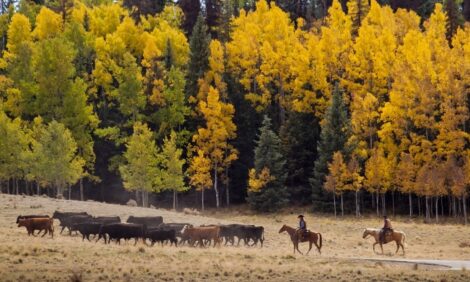



Limited grass growth and pandemic restrictions highlight need to plan and monitor grazing
In light of the UK's low milk price, increased feed costs following the ongoing lockdown and depressed grass growth, assessing forage stocks and tracking margins are becoming more essential.Dr Robin Hawkey, Senior Nutritionist for Mole Valley Feed Solutions believes there’s three key areas all dairy farmers should be thinking about during these unprecedented times:
1. Assess your forage stock and plan ahead
Despite a wet start to the year, a prolonged dry spell means grass growth has dropped back in many regions. For example, during early April, average national grass growth rates were less than 30kg DM/ha/day and have only recently increased to around 45kg DM/ha/day, according to Trouw Nutrition’s Grass Watch. Assess forage stocks and put a plan in place in case we enter a drought.
How much forage do you have left? How much forage do you need to produce and what type of first cut do you need? If your main forage component is grass silage, then cut as early as possible and opt for high quality, but calculate the minimum tonnage required. If you are more reliant on maize silage, a slightly later first cut grass silage could be beneficial. Also consider if harvesting wholecrop might be an option.
Think about what feeds you could use to extend forage stocks if we enter a drought. A decline in beer production following pub closures means that co-products like brewers grains are going to be less available and more costly. Fodder beet could be an attractive option as some farmers were unable to harvest it during the wet winter and subsequently there is good availability in some regions. Consider ensiling washed and chopped beet with sugar beet or soya hulls in a ratio of 4:1.
2. Track performance & margins
Monitor parameters such as planned cow numbers, production and cash flow. Simply understanding numbers of cows in milk/week will allow you to plan feed requirements and budget.
Margin over purchased feed (MOPF) should also be reviewed weekly, rather than monthly in response to increasing fluctuations in milk price, feed price and feed supply. MOPF is a crude measure, but is a simple and quick way to keep an eye on how things are going and identify potential issues before they develop. Diets can then be fine-tuned appropriately to deliver the highest possible MOPF.
3. Set clear objectives
What are your objectives? They might be maximising grass utilisation or fat and protein percentages. Whatever your aims, ask yourself if you are getting the most from your inputs to help achieve your objectives.
Avoid making cuts that could compromise transition cow nutrition as this will have a detrimental effect on long-term performance. Also, ensure rumen health is optimised to get the most from forage; it’s about the value of every input, rather than the cost. For example, feeding yeast and straw to safeguard rumen health is well worth it. If you need to cut costs, target stale cows.


